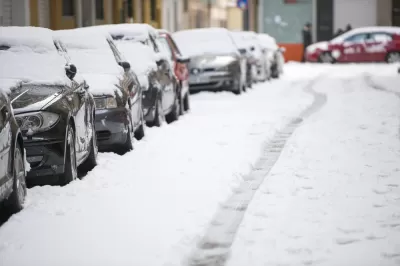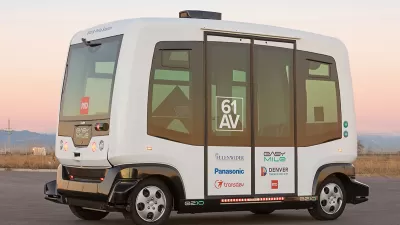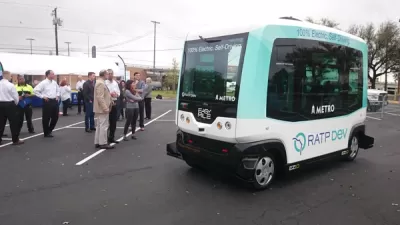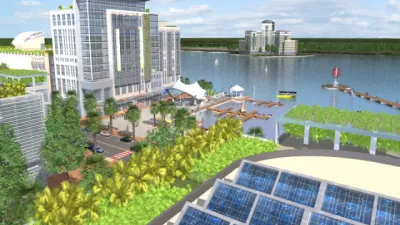Details of the ongoing testing and experimentation of an autonomous shuttle bus called Minnie at a facility north of the Twin Cities.

"Winter driving in Minnesota presents some challenges for the technology underpinning autonomous vehicles, much of it being developed by companies in temperate Silicon Valley, and tested in sunnier climes," reports Greta Kaul.
There's a test to prove it too. As Kaul reports, the Minnesota Department of Transportation is testing an autonomous shuttle bus affectionately nicknamed "Minnie," at a facility near Albertville. Conditions in Minnesota and other northern states will determine the future feasibility of autonomous vehicles. "It’s important, [Minnesota Department of Transportation officials] say, that conditions like snow, salt-caked cars and black ice are considered by both manufacturers and policymakers as cars start to drive themselves."
So far, Minnie has encountered difficulties with snowbound conditions. For instance, road salt blocks sensors. 3M "is working with MnDOT on the shuttle project, is helping to develop films that protects the sensors," according to Kaul. There's also falling snow: "LIDAR is a very sophisticated form of technology, but it can be foiled by precipitation," explains Kaul. Snow is a particularly good reflector of infrared laser light, too.
FULL STORY: Driving in Minnesota winters is hard — even for driverless vehicles

Trump Administration Could Effectively End Housing Voucher Program
Federal officials are eyeing major cuts to the Section 8 program that helps millions of low-income households pay rent.

Planetizen Federal Action Tracker
A weekly monitor of how Trump’s orders and actions are impacting planners and planning in America.

Ken Jennings Launches Transit Web Series
The Jeopardy champ wants you to ride public transit.

‘Minnesota Nice’ Isn’t so Nice When You Can’t Find a Place to Live
The Economic Development and Housing Challenge Program can help address the scourge of homelessness among Indigenous people.

NYC Open Streets Organizers Call for City Support
The number of open streets projects has dropped year after year as volunteer groups struggle to fund and staff them.

Crime Continues to Drop on Philly, San Francisco Transit Systems
SEPTA and BART both saw significant declines in violent crime in the first quarter of 2025.
Urban Design for Planners 1: Software Tools
This six-course series explores essential urban design concepts using open source software and equips planners with the tools they need to participate fully in the urban design process.
Planning for Universal Design
Learn the tools for implementing Universal Design in planning regulations.
Heyer Gruel & Associates PA
Ada County Highway District
Institute for Housing and Urban Development Studies (IHS)
City of Grandview
Harvard GSD Executive Education
Toledo-Lucas County Plan Commissions
Salt Lake City
NYU Wagner Graduate School of Public Service





























